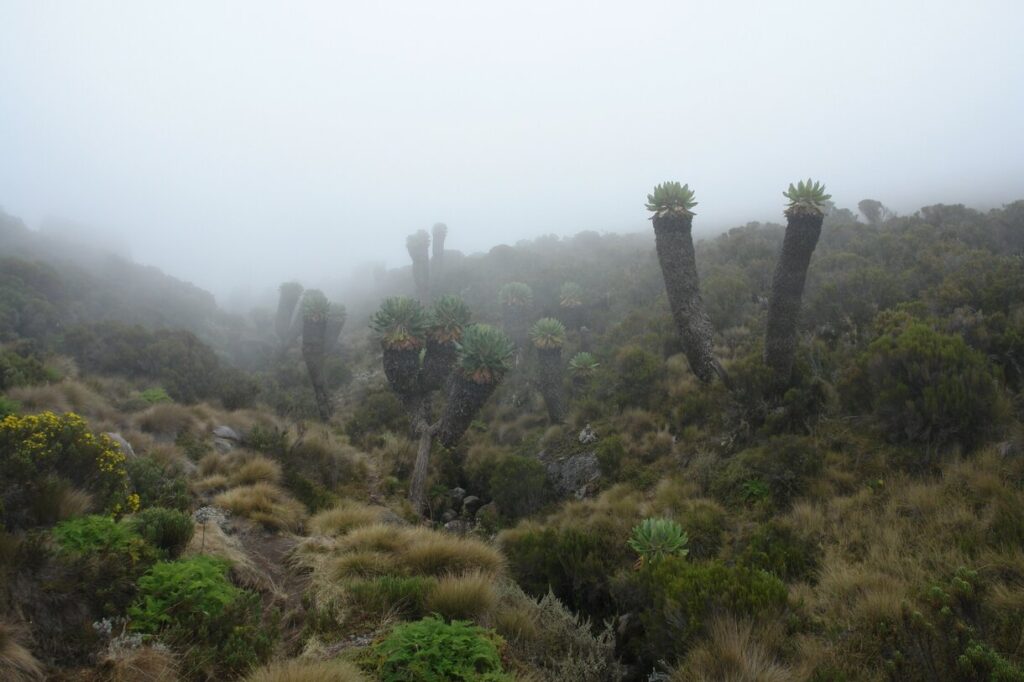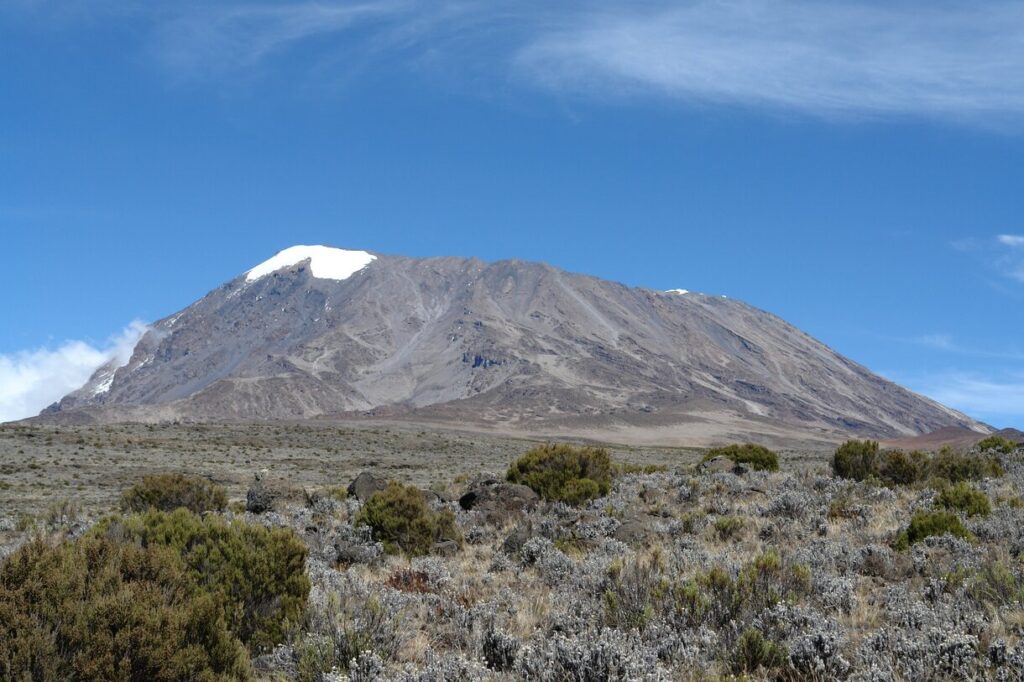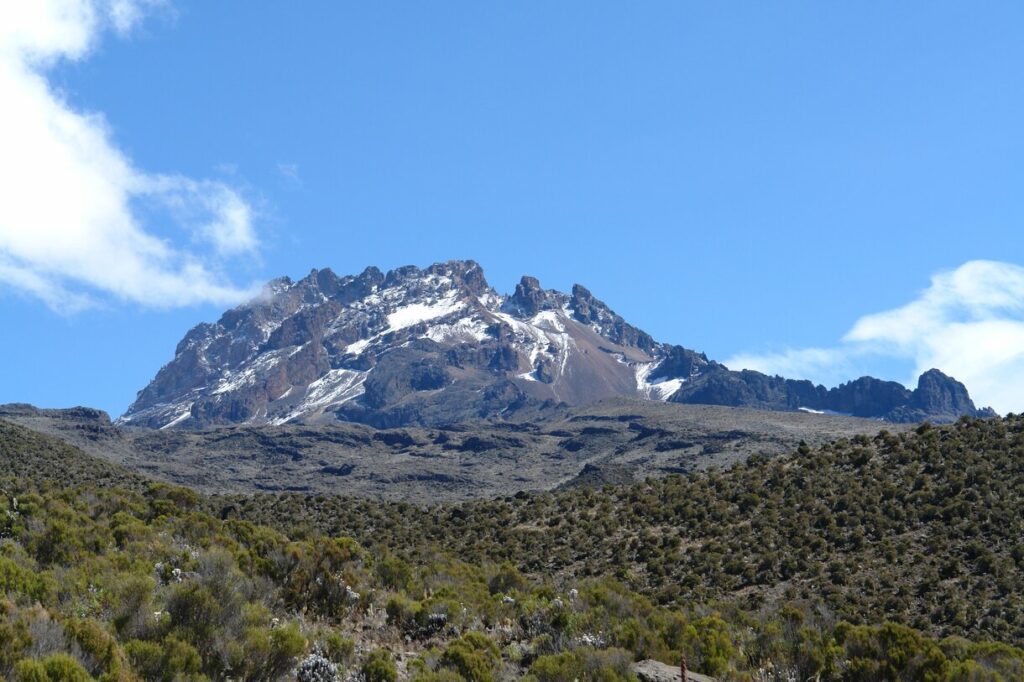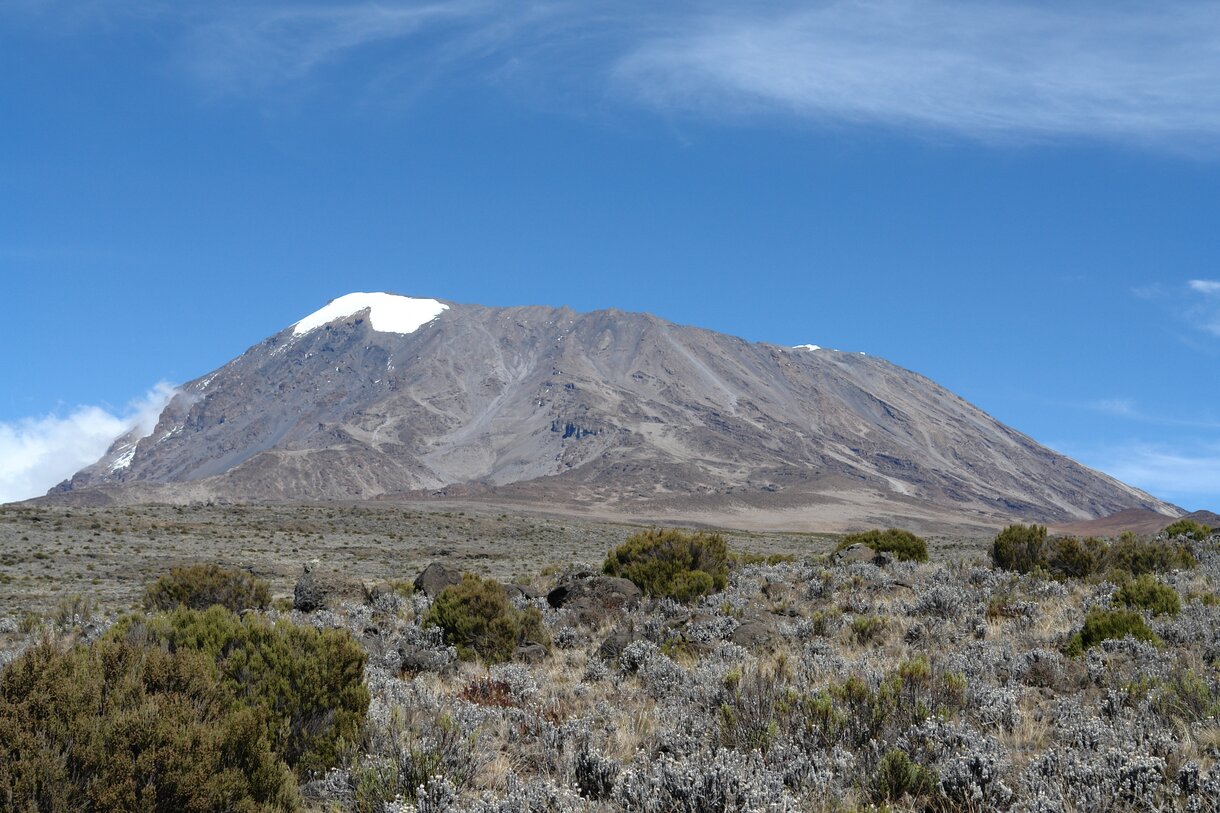KILIMANJARO – JOURNEY TO THE ROOF OF AFRICA
The decision was made – I would challenge Kilimanjaro, Africa’s highest peak (19,341 ft) and the world’s tallest free-standing mountain. This dormant volcano, called “Uhuru” (freedom) by locals, has fascinated explorers for centuries. The first documented ascent was by Hans Meyer and Ludwig Purtscheller in 1889, but only in the 21st century did trekking become accessible to more adventurers.

Preparation – More Than Just Physical
A month and a half before departure, I began intense training, increasing my runs from 2-3 to 6 times weekly. But Kilimanjaro isn’t just a physical challenge – it’s also a test for your wallet. Based on online accounts, this promised to be my most expensive vacation. Unfortunately, the predictions proved accurate. In this guide, I’ll share ways to somewhat reduce costs for this extraordinary adventure.
Journey to Tanzania
We crossed into Tanzania by bus. Formalities took just 30 minutes: form completion, $50 visa, and onward travel. Moshi, the town at Kilimanjaro’s base, welcomed us with a luxury hotel and pool – our last comfort before days of spartan climbing conditions.
Fun Fact: Kilimanjaro sits about 205 miles south of the equator, yet its summit has permanent snow – a phenomenon that fascinated ancient Greek geographers.
Route Choice – Marangu Route
Kilimanjaro offers several ascent routes. I chose the most popular and easiest – Marangu Route, nicknamed the “Coca-Cola route.” The name dates from when bottled Coke was available at huts along this trail, a rarity on other routes.
Costs run about $100-150 daily. The cheapest option hires just a guide, requiring you to carry all gear and food – drastically reducing success chances. After research, I chose a compromise: a full agency package with guide, cook, and porters.

Gear and Preparation
My prior mountain experience was limited to Rysy (8,199 ft) and a failed attempt on Peru’s Mount Chachani. That failure became a valuable lesson. This time, I prepared thoroughly:
- Professional hiking boots
- Thermal base layers
- Fleece and waterproof jacket
- Headlamp with spare batteries
- Energy snacks
- Altitude sickness medication
- Minimum 3 liters of water daily
Day 1: Marangu Gate (6,100 ft) → Mandara Hut (8,858 ft)
We began at Marangu Gate, meeting our professional team: guide Richard, his assistant, cook, and porters. Fellow climbers included Vasily from Russia and Heinz from Germany – an international crew ready for the challenge.
Day one covered about 7.5 miles, ascending from 5,577 ft to 8,858 ft. Mandara Hut offers basic dorm cabins with five beds and minimal space. Spartan conditions, but standard for mountain lovers. Evening wash? A bowl of warm water and imagination.

Day 2: Mandara Hut → Horombo Hut (12,205 ft)
Day two brought a 9-mile trek through increasingly stark landscapes. Lush vegetation yielded to sparse alpine flora. After 5.5 hours, we reached Horombo Hut. The colder night tested my sleeping bag’s limits.
Day 3: Acclimatization
Acclimatization day proved crucial. We climbed to 13,780 ft then descended, helping our bodies adjust to thin air. Oxygen deprivation became noticeable, but overall I felt strong.
Historical Note: In 1961, Kilimanjaro became Tanzania’s independence symbol when President Julius Nyerere lit the “torch of freedom” at the summit.

Day 4: Horombo Hut → Kibo Hut (15,420 ft)
The trek to Kibo Hut grew increasingly demanding. After 5.5 hours, we reached the large hut where… there was no water. Dinner, 8 hours rest, then preparations for the summit push.

Nighttime Summit Assault
At 11 PM, we rose for a light meal and began climbing in darkness. Ahead lay 3.7 miles and over 3,900 ft of elevation gain. Fortunately, no wind and bearable temperatures. The sandy trail wound up steep switchbacks.
At dawn, I reached Gillman’s Point (18,652 ft) – the first of three possible summit goals. The final 656 ft to Uhuru Peak seemed short, but thin air made each step a battle.

Uhuru Peak (19,341 ft) – Summit Achieved!
At 6:45 AM, I stood atop Africa. The view took my breath away – equatorial glaciers are a sight I’ll never forget. A few summit minutes, commemorative photos, then descent.
Climate Reality: Kilimanjaro’s glaciers have shrunk over 80% since 1912. Scientists predict they may disappear completely by 2040 due to climate change.

Return and Reflections
Attempting to descend to Mandara Hut same day proved overly ambitious – we covered 18.6 miles downhill, arriving completely exhausted. Next day, the final stretch to Marangu Gate where I received my summit certificate.
Unfortunately, a tipping dispute arose. Our $50 offer dissatisfied the team, but brief discussion resolved it. Despite this, I wholeheartedly recommend guide Richard Vitalis – consummate professionalism.

Kilimanjaro – Was It Worth It?
Despite high costs and spartan conditions, Kilimanjaro changes perspectives. It’s not just physical – it’s a lesson in humility before nature’s power. And sunrise from Africa’s roof? Priceless.
For aspiring climbers, my advice: prepare financially and physically, but most importantly – mentally. Kilimanjaro forgives no disrespect, but richly rewards respect and determination.

2024-06-25 at 10:14
You’re so resourceful!